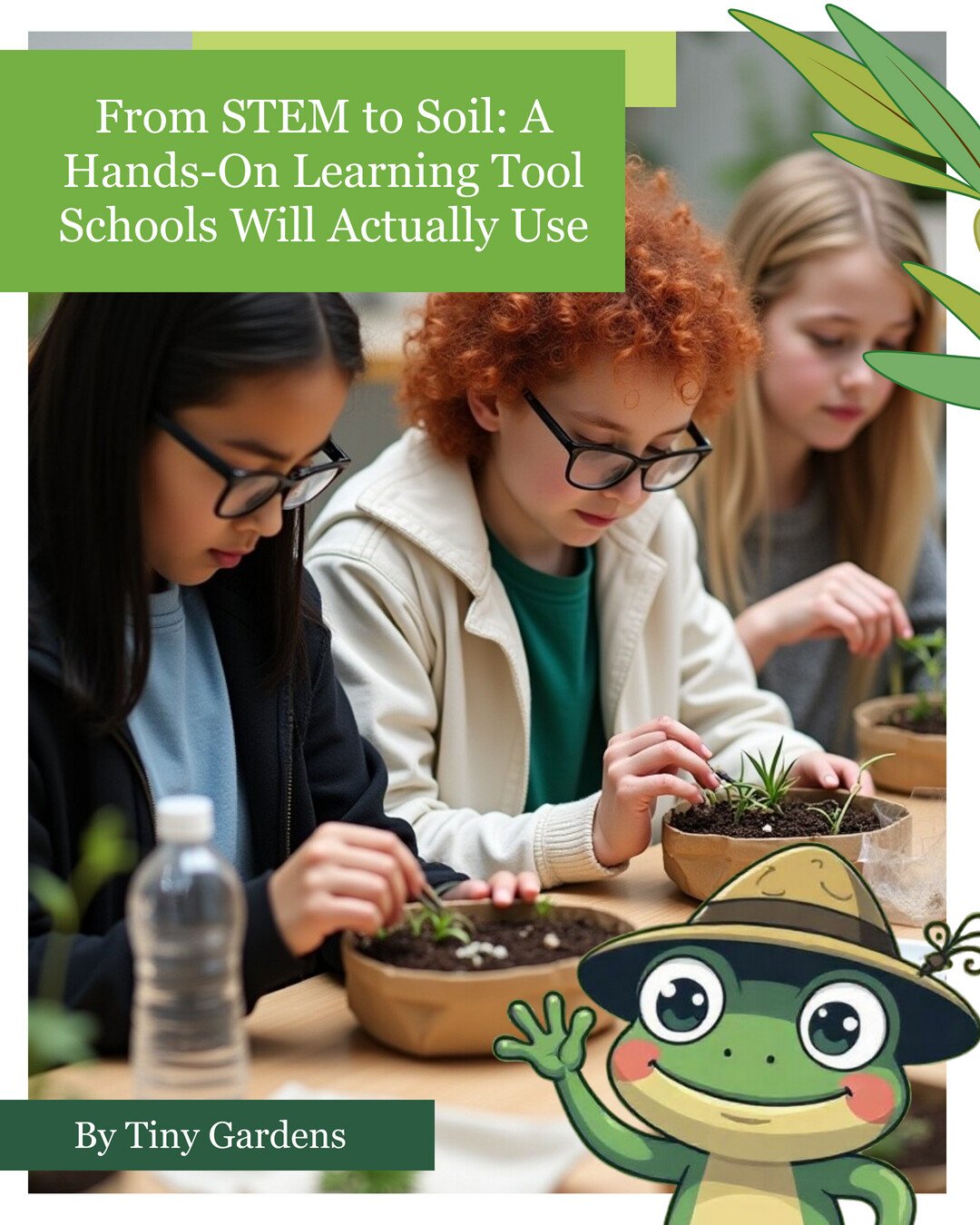From STEM to Soil: A Hands-On Learning Tool Schools Will Actually Use
How Tiny Gardens Bridge Science, Art, and Environmental Learning in Classrooms and Clubs
Finding engaging, educational tools that excite students—and fit into your school’s curriculum or enrichment goals—is no small task. As school program directors, curriculum coordinators, and afterschool leaders know, activities must be educational, flexible, budget-conscious, and—above all—meaningful.
Enter Tiny Gardens, a hands-on learning experience that seamlessly connects STEM, art, and environmental education into one compact, calming activity. Built around beautifully curated planting kits, Tiny Gardens are designed to foster curiosity, encourage critical thinking, and invite students of all ages to explore the natural world in miniature form.
They’re more than just a craft. They’re a platform for real-world learning, creativity, and mindfulness—delivered in a flexible format that works in classrooms, after school programs, and clubs.
A Natural Bridge Between STEM and Creativity
Education isn’t about teaching subjects in isolation—it’s about helping students see how they connect. Tiny Gardens are rooted in interdisciplinary learning, combining science, design, environmental awareness, and personal expression.
Students begin by building a miniature landscape using a variety of natural and decorative elements. Depending on the kit, this could include moss, bark, pebbles, dried florals, and optional live cuttings or soil-based elements. As they build, students observe how the pieces interact, design layouts with purpose, and think through concepts like balance, structure, and sustainability.
These tasks align perfectly with Next Generation Science Standards (NGSS) themes like:
Structure and function in ecosystems
Human interaction with natural environments
Sustainability and conservation
Cause and effect in environmental systems
Plus, with endless opportunities for reflection and customization, Tiny Gardens are a gentle way to integrate SEL (social-emotional learning) into science and art time.
Real Learning, Rooted in Patience and Care
In an age of instant results and constant screen time, Tiny Gardens encourage students to slow down, observe, and be intentional. Assembling a miniature garden takes more than gluing pieces together—it requires:
Observation: How do different materials feel, look, and fit together?
Patience: Tiny elements take time and care to arrange.
Empathy: What message or emotion do I want this garden to express?
Design Thinking: What layout works best? How can I revise and improve?
These moments aren’t just creative—they’re critical to developing the executive functioning and reflective skills today’s students need across all subjects.
And when a student brings their finished garden home, the learning doesn’t end. Many kits come with an optional take-home reflection card or journal prompt to encourage continued observation, storytelling, or even plant care.
Adaptable for Grade Levels and Learning Environments
One of the standout features of Tiny Gardens is their versatility. Whether you’re working with 1st graders or high schoolers, these curated planting kits are easy to adapt.
In lower grades:
Students can explore texture, color, and pattern.
Teachers can tie gardens into simple ecosystem or habitat lessons.
Students can name their garden, tell a story, or describe its “weather.”
In upper grades:
Students can create themed gardens based on biomes, historical eras, or literature.
Projects can be extended to include environmental research or journal reflections.
Garden designs can be connected to sustainability, design thinking, or even architecture.
These kits also work beautifully for:
Earth Day or Arbor Day events
Garden clubs or afterschool enrichment
Indoor recess or rainy-day activities
Science + art integrated projects
Mindfulness and mental health programming
Whether it’s a one-day activity or a multi-week project, Tiny Gardens are as flexible as your learning goals.
Teaching Sustainability, Ecosystems, and Personal Responsibility
As environmental education becomes more urgent, schools are seeking hands-on ways to engage students in discussions around climate, conservation, and responsibility.
Tiny Gardens offer a microcosmic look at those big ideas. Whether students are exploring the role of moss in water retention or imagining a post-human habitat, these kits prompt deeper thinking about the natural world—and our role in caring for it.
And because they’re made with mostly natural, recyclable, and reusable materials, they also align with your school’s commitment to eco-conscious learning.
Educators can extend the experience by incorporating:
A composting or recycling lesson for leftover materials
A discussion on where natural elements come from
Activities around local habitats or gardening history
Extend the Learning at Home
Many schools are looking for ways to strengthen the school-to-home connection without adding more digital homework. Tiny Gardens solve that beautifully.
Each curated planting kit includes everything a student needs to create their own garden—and many schools choose to let students take them home as a keepsake. Families love seeing what their child created, and it sparks conversation about nature, art, and personal meaning.
Want to go a step further? Offer optional follow-up questions, prompts, or classroom “garden gallery” activities that let students showcase their tiny ecosystems to one another and their families.
A Learning Tool Schools Will Actually Use
In a crowded marketplace of classroom activities and enrichment tools, Tiny Gardens stand out for their ability to do more than one thing well.
They’re:
Visually engaging and hands-on
Flexible for all ages and settings
Aligned with academic and emotional growth goals
Supportive of creativity, calm, and collaboration
Easy to prep, lead, and scale
Whether you're planning your Earth Day schedule, launching a new garden club, or simply looking to bring more creativity into your STEM curriculum, Tiny Gardens offer a low-lift, high-impact way to grow curiosity in every classroom.

